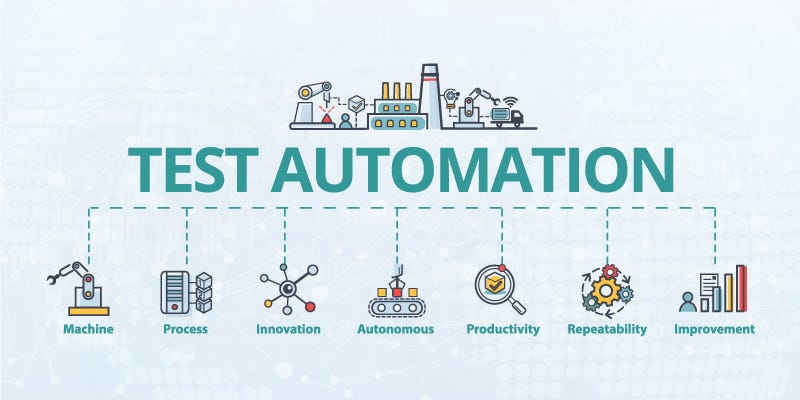Automation Testing Techniques: Best Practices for Seamless Assimilation
Automation Testing Techniques: Best Practices for Seamless Assimilation
Blog Article
From Manual to Automated Testing: A Comprehensive Guide to Transitioning Smoothly and Successfully
In the world of software testing, the shift from handbook to automated procedures has become a progressively important shift for companies looking for to enhance effectiveness and accuracy in their testing methods. The trip from manual to automated screening is not without its challenges, yet when come close to strategically and with a clear strategy in mind, the advantages can be significant.
Benefits of Automated Evaluating
Automated screening offers countless advantages, enhancing performance and accuracy in software growth procedures. One primary advantage is the substantial decrease in testing time. Automated examinations can be run at the same time on several tools and operating systems, considerably quickening the screening phase contrasted to hands-on screening. This raised performance permits faster responses on the high quality of the software application, enabling programmers to recognize and address problems promptly.
Furthermore, automated screening makes certain a higher level of accuracy in discovering issues. Uniformity in screening is likewise improved, as automated examinations implement the exact same steps precisely each time they are run.
Selecting the Right Devices

To start with, analyze your needs and purposes. Comprehend the scope of your task, the technologies involved, and the skill set of your team. This analysis will aid you determine the attributes and capacities you need in your testing tools.
Secondly, think about the compatibility of the tools with your existing systems and procedures. Smooth combination with your existing software application growth lifecycle is essential to make certain a smooth change to automation.
In addition, evaluate the scalability and flexibility of the tools. As your screening requires evolve, the tools should have the ability to adapt and suit adjustments successfully.
Finally, consider the assistance and neighborhood around the devices. Robust assistance and an active customer area can give valuable resources and support when carrying out automated testing. By very carefully thinking about these facets, you can select the right tools that straighten with your demands and set the phase for a successful transition to automated testing.
Writing Reliable Examination Manuscripts

When crafting examination scripts, it is important to take into consideration the details needs of the software being tested and ensure that the scripts attend to all critical functionalities. Clear and detailed naming conventions for examination manuscripts and examination cases can boost readability and maintainability. Additionally, incorporating error handling devices within the examination scripts can aid in determining and dealing with concerns quickly.
Moreover, arranging examination scripts right into modular components can enhance reusability and scalability, reducing redundancy and enhancing performance in examination script maintenance. Regular testimonials and updates to evaluate scripts are critical to equal advancing software demands and capabilities. By following these concepts, testers can develop effective and robust examination scripts that add significantly to the success of automated view publisher site testing procedures.
Integrating Automation Into Workflows
By flawlessly incorporating automated screening devices like Selenium or Appium right into the software application development lifecycle, groups can achieve faster feedback on code adjustments, leading to quicker pest discovery and resolution. This integration allows for continuous screening throughout the advancement procedure, ensuring that any concerns are recognized early on, more resulting in higher software program quality. Appropriate combination of automation devices requires collaboration between growth, testing, and procedures teams to develop a unified process that optimizes efficiency and efficiency in delivering top quality software application items.
Making Certain a Smooth Transition
Successfully transitioning to automated testing entails thorough planning and mindful implementation to make the most of and reduce disruptions effectiveness in the software program advancement process - automation testing. To ensure a smooth change, it is necessary to start by performing a detailed evaluation of the existing testing processes and recognizing areas where automation can bring the most substantial benefits. Engaging with all stakeholders early on while doing so, including designers, testers, and task supervisors, is critical for garnering assistance and buy-in for the automation campaign
Interaction is crucial during this transition stage. Clear communication of the goals, benefits, and expectations of automated screening helps to handle any kind of resistance or problems that may occur. Additionally, providing appropriate training and sources for employee to upskill in automation tools and methods is crucial for making certain an effective transition.

Verdict
In final thought, transitioning from guidebook to automated testing offers countless benefits, consisting of raised effectiveness and dependability. By picking the suitable devices, composing effective examination scripts, and integrating automation perfectly into workflows, companies can make certain a successful and smooth shift. It is vital to welcome automation as an important possession in software application testing procedures to enhance overall top quality and efficiency.
In the world of software program screening, the shift from guidebook to automated procedures has come to be a progressively important transition for organizations looking for to improve performance browse around this site and precision in their screening methods. Automated examinations can be run at the same time on numerous tools and running systems, dramatically speeding up the screening phase compared to manual testing. Uniformity in screening is also enhanced, as automated tests execute the exact same steps precisely each time they are run.To ensure the effective application of chosen testing devices, the creation of efficient test manuscripts plays a critical duty in confirming the performance and efficiency of automated procedures - automation testing. By complying with these principles, testers can create effective and durable test manuscripts that contribute considerably to the success of automated screening processes
Report this page